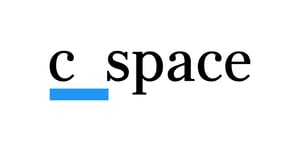
Discover what product features customers really value
Identify the features that drive genuine consumer preference
We are constantly making choices, some conscious, but most unconscious. Standard methods with traditional question scales are unable to reveal what component of a product or concept drives its preference. Most of these scales don’t simulate real-life conditions, which always include some type of situational trade-offs. Therefore, it's best to use trade-off experiments to simulate realistic consumer decision making.
The Gradient difference
- Define the decision
Before we even draft a questionnaire, we clarify your key objectives. Whether you’re launching a new product, rebranding an existing line, or testing a tiered model, we gather data that zeroes in on that specific decision. - Design targeted research
We use advanced statistical tools, but we always remember the human side of research. We tailor surveys and experiments to extract only the insights critical to your decision, nothing more, nothing less. - Analyze & interpret
Our team of data scientists and social researchers interrogate the numbers. Beyond just the “what,” we pinpoint the “why”, uncovering the hidden preferences, allowing you to build the product consumers really want. - Activate insights
Finally, instead of broad reports, we deliver clear, practical recommendations to inform your clients’ product roadmaps, prioritizing features for maximum consumer impact and competitive advantage.

Survey methodologies that drive results
Conjoint analysis is a technique for quantifying how the attributes of products and services affect preference. It is typically used to help identify the optimal design of products, messaging, and pricing.
A conjoint compares combinations of attributes. Each respondent is shown multiple lists with varying combinations of the attributes.
Across multiple lists of choices from hundreds of respondents, a statistical model identifies precisely how much each attribute and level contributes to making the decision. This method helps your agency:
- Determine optimal product configurations.
- Identify which features significantly influence consumer decisions.
- Predict how market changes impact consumer preferences.
A Max(imum) Diff(erences) analysis assesses a survey respondent’s preferences without directly asking them. Instead of ranking a long list of items which can be cumbersome and cognitively taxing, a MaxDiff has respondents choose the “best” and “worst” options out of a given set. Respondents are typically asked to designate the “best” and “worst” options across a number of choice tasks. For each choice task, a random subset of the total items are presented to reduce the cognitive burden on respondents. With MaxDiff, your agency can:
- Clearly pinpoint the most and least valued product features
- Simulate real-world trade-offs to reveal genuine consumer preferences
- Guide clients on strategically focusing resources on high-impact attributes
Kano Analysis categorizes product features based on their effect on customer satisfaction, distinguishing between basic requirements, performance features, and delightful extras. This method enables your agency to:
- Differentiate between what is expected and what can truly delight your customers.
- Prioritize product improvements strategically
- Recommend features that meaningfully enhance customer experience and loyalty
Success stories at a glance


We partnered with brand strategy agency Rescout and armed them with the research necessary to develop a membership rewards program for Lands’ End customers.
Read moreTrusted by leading organizations



















